Iyon Stream Nature Reserve in the very north of the country hosts the most spectacular waterfall in Israel. Even in summer, the park is rich in riparian vegetation and the water is replete with fish.
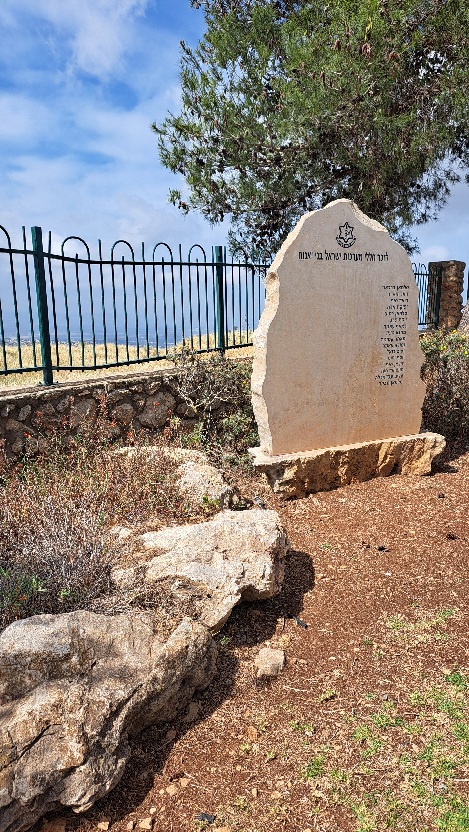
Druze Cemeteries – State, Religion, and the Soul
Druze Cemeteries and the Life After Death
Where do Druze Souls Go After Death?
A Druze person immediately reincarnates into a new Druze baby the minute he or she dies. Women are re-born as girl babies, and men as boy babies. They can reincarnate in Syria, Lebanon or even Venezuela, but only into a Druze body and community.
The Druze shell their bodies like an old shirt, and get a new one, so there is no need for graves, or mourning rituals.
See my post:, ” Druze Religion – Life After Bodily Death“, regarding interesting stories about children finding their previous homes in other families, or artifacts they left behind.
The Druze Military Cemetery
When it comes to the Israeli army, though, and the Druze have been serving there since the decree of 1956, the state demands a proper grave and cemetery. The people of Yanuh-Jat, who had a history of double loyalty, as described below, decided to bury their sons in the official state’s way, to clear any doubts about their loyalty.
Yanuh and Jat are two villages joined into one regional council. A bit outside the residential area and on a hill nearby, our guide took us to the very impressive and moving military cemetery.
We were sitting by the graves while our guide was giving us lengthy explanations about Druze contribution to the Israeli state, and the early controversies and dilemmas.
On the left: The group listens to Nir Keinan’s narration about Druze participation in the Israeli wars.
A questions of loyalty
Nir told us that as early as1929 and 1939, the Druze were supporting both sides in the Arab-Jewish conflicts on the Land.
In 1948, Qawuqji, leader of the “Liberation Army”,reaches Jabal Druse in Syria and asks Sultan Al Atrash, their leader, if they were willing to fight against the Jews. The sultan delegated the question to the people to decide on a personal basis. A Druze regimen was drafted to Qawuqji’s “Liberation Army”. There were battles around Ramat Yohanan and Usha, as well as on Mishmar Ha’Emek. The Druze regiment lost to the Carmeli brigade. Following that, some returned to Syria, and some stayed in the Land, and settled in Shfar’am. Nir told us of a man who was previously an officer in Qawuqji’s army, and then following connections with prominent Jews, was drafted to the IDF and reached the rank of colonel. His grandson is the first Druze navigator in the Israeli Air Force.!!!
Fighting their brothers – the battle on the hill
Between the 28 and 31 of October 1948, the northern front was decided. The Carmeli Brigade conquered what was left of the Lower and Upper Galilee and all the way to the Litani River in Leabnon, though Ben Gurion decided to retreat from there.
Jat and Yanuh fighters joined the ninth brigade to fight Qawuqji’s “Liberation Army”. Nir described to us how three Jewish officers and several Druze fighters climbed that hill where the cemetery is now located and built a military post there. For a moment it seemed as if Qawuqji was winning: the radio communication broke down, and the men did not get the instructions to retreat. Druze from Jat and Yanuh who were recruited to Qawuqji’s force killed the 11 Druze and the three Jewish officers. But the IDF, then, operated several piper aircraft, and dropped bombs over near Tarshiha. The Iraqis retreated to Lebanon, and the Galilee got under our control.
Getting the Druze under Israel’s fold
According to Nir, after the establishment of the state, several prominent people were calling to boycot Jat and Yanuh due to the “terrible betrayal”. They wanted to disconnect the villages from water and electricity, and the pro-Israeli Druze acted to prevent their co-religionists from coming to Nabi Shu’ayb, the holy place by Tiberias. In the end, people saw that this would not work, and a Sulha (a reconciliation ceremony) took place. As mentioned above, the people of Yanuh-Jat decided to bury their fallen on this very hill to take off any doubts about their loyalty.
The issue of the draft
Although Sultan el Atrash from Jabal Druse opposed the draft, in the end, to avoid the conflict, Sheikh el Tarif said that the State should enforce the draft on the Druze. In 1956, the Druze were drafted to the IDF by law, and concomitantly received the status of an acknowledged religious minority group. That was a great event, a first in their entire history.
Ben Gurion’s policy was to remove all Arab population from the proximity of the Lebanese border, including the Christians (in the famous case of Bir’am and Ikrit), all except for the Druze.
We walked among the tombs, reading the epitaphs, thinking of the dramas and the sacrifices involved in the Druze alliance with the State of Israel and our lives. No other minority or group of people has contributed as much to our country as the Druze.
The ultimate honor
Tombstone for Lt. colonel, Salman Habaka, 33, commander of battalion 53, Barak formation. Died November 2nd, 2023 in north Gaza Strip.
The military fallen are automatically raised by the community to the level of Uqqal, the religious community, despite not having been tutored in the religion before.
Watch this archived film about the military reburial ceremony of the Druze fallen over the battle of Yanuh in 1948:
https://jfc.org.il/en/news_journal/27751-2/92672-2/
Left: Tombstone of Wasim Nazal, 25. married and father to a 2-year-old son, who who was abducted and killed with several other soldiers by Hezbollah on the Lebanese border on July 25th, 2006, an event that triggered the onset of the Second Lebanese War. Right: a collective monument at Yanuh-Jat cemetery
Sarah Stern from Emet emphasizes that our alliance with the Druze is not merely symbolic. It is written in blood. Read her words in my post “The Druze – Israel’s Mountain Allies“
What makes this loyalty so remarkable is that the Druze are not Jewish. They are an ethnoreligious group with their own unique faith, a secretive offshoot of Islam, and their own language and culture. They have no historical claim to Zionism, nor any requirement to serve in the Israeli military. Yet, by choice and conviction, they have thrown their lot in with the Jewish state. This alliance is not merely symbolic. It is written in blood.
Sarah Stern Tweet
Shvil Habanim - The Trail of the Sons - Commemorating in a Positive Way
The Druze have their own preferred way of comemmorating their fallen. They have recently inaugurated Shvil Habanim, The Trail of the Sons, that meanders between all Druze villages in the Carmel and Galilee, and terminates at Nabi Shuʿayb’s tomb by Tiberias, the most important religious site in the Druze faith. The 250-km trail is planned to have 18 observation points, and is designed to attract the general public to enjoy the views, visit the Druze villages and get acquainted with the Druze minority in Israel.
The path is meant to commemorate the fallen, but in a live, active way, rather than as an “inanimate monument:”We wish here to express the fundamentals of our belief in the strength of the bond between the dead and the living, between man and land; past, present and future; man and fellow man, one people’s culture with another’s.” The trail will be used for hiking, riding bikes as well as horses, and for sporting events
These lookouts and sites shall be dedicated to the memory of the fallen Druze soldiers in Israel, their life’s work and affinity to the place, in the aim of endowing the values and example of courage, heroism, loyalty, mutual responsibility, and brotherhood that characterized their path in life.
Brigadier General (Res.) Amal Asad, Shvil Habanim website Tweet
The civil Druze Cemetery in Yarka
Top: Civil cemetery in Yarka is actually a parking lot. Bottom left: Trash and fallen leaves over the space where the dead are dropped underground. Bottom right: A “cushion” donated by the military for the commemoration for Corporal Habish Najib, who had fallen in 1954, and whose family has preferred to bring his body over to the civil cemetery.
While in Yarka, we were driven to the common people’s “cemetery”. All one could see there was a parking lot under a building’s lally columns. Trash was blowing in the air, and dry leaves were rustling on the concrete floor.
The dead are brought here covered in shrouds. Surat el Fatiha, which does not mention Muhammad, is read; then the body is pushed into the basement. Later the bones are raked into a corner.
In the past, the “cemetery” used to be on the outskirts of the village, but the village expanded and now it is right in the center. In the older days, people would dig a hole in their yard and bury there.
Military exceptions
People not interested in a military burial receive a flat “cushion” from the Ministry of Defense and stick it on one of the columns in the parking lot, as you can see in the picture.
The underlying idea
As mentioned above, according to the belief. we do not really die; we metamorphose and are born again into another person. No reason for mourning or fancy tombstones.
BUT…
Tomb of Sheikh Amin Tarif and Daughter in Julis
There are exceptions. Important figures in Druze history – founders, prophets, etc., as well as some current leaders, are tombed. Their tombs serve as pilgrimage sites, and ceremonies and rituals are performed there by the Uqqal.
Sheikh Amin Tarif is one of them. The Sheikh and one of his daughters are buried royally in their very home in Julis, turned into a pilgrimage site. Julis is the hometown of the Tarif family, leaders of the Druze community worldwide. There is a hilwe for men and a hilwe for women, with loudspeakers transmitting the sounds from side to side.
Top: Many pictures of Sheikh Tarif with important political figures and celebrities decorate the walls.
Bottom left: Sheikh Amin Tarif’s tomb. Bottom right: his daughter’s tomb
The spiritual hierarchy
The Druze religion, perhaps like the Free Mason, has degrees, a spiritual hierarchy the devotees can rise on. At the highest levels, the man wears a special rounded white turban. Only ten people in the world wear this bonnet today. Amin Tarif and his son, Muwaffaq Tarif are two of those prestigious spiritual figures. By now Sheikh Amin Tarif’s tomb is considered a holy site. It stands in his actual home.
For 60 years Sheikh Amin Tarif headed the Druze society, including the Syrian and the Lebanese communities. He was the highest authority for spiritual and political questions. When Israel was at odds with Jordan, he refused even to talk with “the enemy”, his Druze brethren there!!! He was “crowned” only when the borders opened with the peace treaty in 1994. Since 1956, he led the community from his home in Julis. During the British mandate, Tarif already claimed that the mandate was provisional until the establishment of a Jewish state. He managed to keep the Druze out of the Arab-Jewish conflict of 36-39, prevented Druze from leaving their homes in 48, Thanked the IDF and the State for helping the Druze live in better conditions than elsewhere, and supported Israel against all odds. In 1988, he was elected to be the spiritual leader of all Druze communities in the Middle East.
Merit or inherit?
Officially, there are no “fathers’ rights”, and each person “sews his own gown”. Posts are not inherited. Yet, in reality, MuwaffaqTarif, Sheikh Amin’s son, had risen in ranks, built himself status and stature, and is the de facto leader of the Druze community today.
Civil leadership and spiritual leadership
Our tour guide told us about other prominent figures, like Sultan Al Atrash from Jabal Druze in Syria, who led the revolt against the French in the twenties. The French sent him on exile to TransJordan with the Brits. He was returned to Syria eventually, and Assad the father gave him the status of a Syrian hero. His sculptures riding a horse with kaffiye and aqal can be found in most Druze villages, while Amin Tarif’s figures are dressed in the white turban to denote his spiritual status.
Sheikh Tarif, women and cultural mores
Tarif conditioned the draft to be restricted to men only, and also prohibited women from driving. Many do nonetheless. My Arabic teacher told us that Druze women don’t drive. Truth is apparently somewhere in the middle. Tarif was worried about cultural assimilation.
By the same token, his daughter was in charge of everything on the site and was buried there as well, receiving the highest honors. Women come especially to her burial room. You identify with a person’s way of life, not with the body. Our tour guide emphasized that women tend to visit the hilwes and the sacred sites more than the men. They are more devout, and get educated in the religion along with their secular studies. Druze generally are very highly educated in Israel.
A bottle of mineral water is always placed at the exit to the space, thus immersing it in inspiration from the Sheikh’s spirit, which enables personal elevation.
 Water blessed and inspired by Sheikh Amin Tarif’s spirit is given to people as they leave the site.
Water blessed and inspired by Sheikh Amin Tarif’s spirit is given to people as they leave the site.
Druze, Israel’s Quiet Allies – History, Current Events, Women, Religion and More
In this post series I attempt to cover several topics pertaining to this fascinating and little-known religious group and ethnic minority in Israel, now on the top of world’s news. Here you can scroll through the topics according to your interest:
Under the Oak Tree in Yanuh-Jat – Intro the the Druze; Israel’s Mountain Allies and Tactics of Survival; Druze Crisis in Syria – Horrors, Analysis and What Next; Druze Secret Religion – for the Chosen Few; Druze Cemeteries – State, Religion and the Soul; Yarka and Julis – Two Quaint Galilean Druze Villages; Druze Women Juggling Tradition and Moderna.
If you like what you see and you want more,
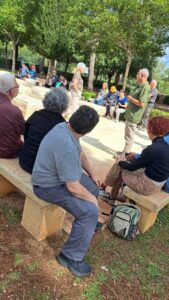
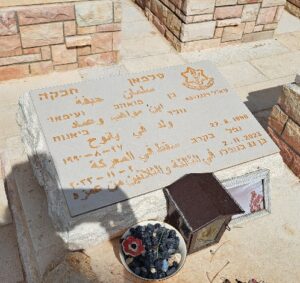


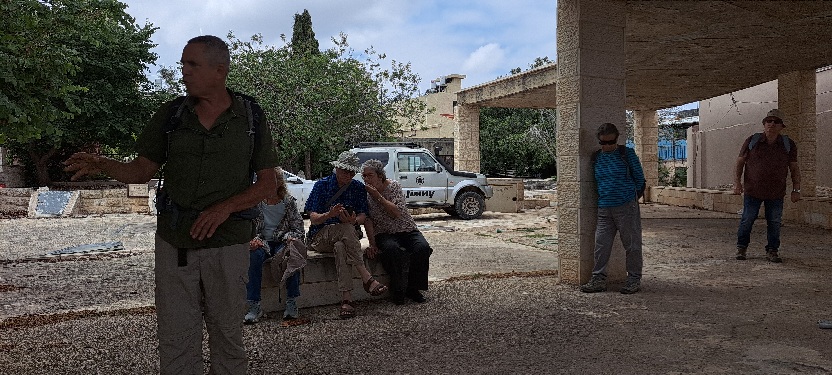

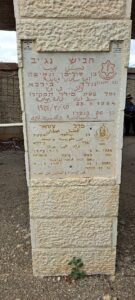
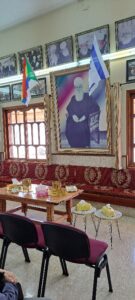
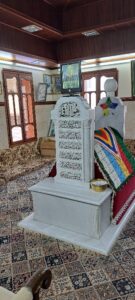
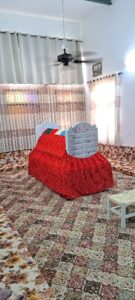
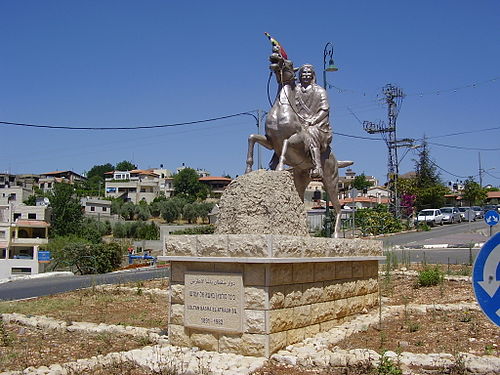



This Post Has 0 Comments